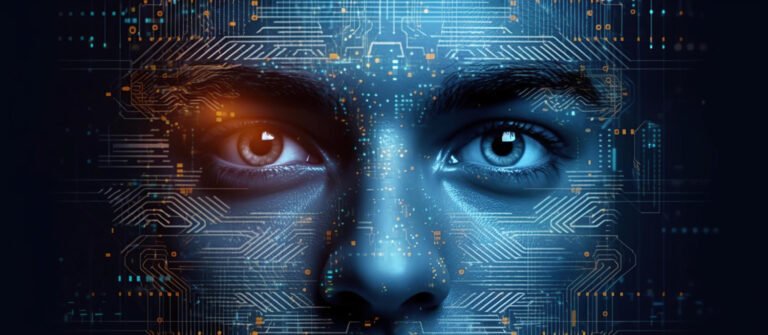The Benefits of Experiential Learning for Tertiary Students
Experiential learning supplements traditional lectures with hands-on experiences that prepare students for the complexities of the real world. In this article I’m going to explore the nature, implementation, and significant benefits of this method in tertiary education settings.
Understanding Experiential Learning
Experiential learning transcends the traditional academic learning model by emphasising the importance of engaging students in experiences that involve active participation and reflection. This educational approach is grounded in the experiential learning theory formulated by educational theorist David Kolb. According to Kolb, effective learning is a process where knowledge is created through the transformation of experience.
His model outlines a cyclical process consisting of four stages: concrete experience, reflective observation, abstract conceptualisation, and active experimentation.
- Concrete Experience: This is the initial stage where students engage in a new experience or re-interpret an existing experience. For instance, a student might participate in an internship in a marketing firm, confronting real-time challenges and tasks that demand practical solutions.
- Reflective Observation: During this phase, students reflect on their experiences. Reflection involves observing and reviewing what they have encountered, considering successes and failures alike. This might involve journaling, discussions with peers or mentors, or meditative thinking, where the goal is to derive personal insights and understandings from the experiences.
- Abstract Conceptualisation: At this stage, learners use the insights gained from reflection to develop new ideas and theories or modify existing ones. This is where the connection between theoretical knowledge from classroom learning and practical application begins to crystallise. For example, a student may realise the relevance of a marketing theory when they see its effectiveness in real-world application during their internship.
- Active Experimentation: The final stage of the cycle involves applying the newly created or modified theories to the world around them in new situations. This stage completes the cycle but also acts as a precursor to further experiential learning, as each application provides new concrete experiences to reflect upon.
By engaging in this cyclical process, students are not merely passive recipients of information but become actively involved in the construction of their knowledge. This approach promotes deeper engagement with material, as students are not learning in a vacuum but are continuously applying and testing their knowledge in real-world contexts. The success of experiential learning hinges on the integration of all four of these stages, creating a dynamic learning process that helps students not only to grasp the practical applications of their academic studies but also to become continuous learners. By fostering environments that encourage these stages, universities empower students to take ownership of their learning and develop a deeper connection to their field of study, ultimately preparing them for professional and personal success.
Key Methods of Experiential Learning in Australian Higher Education
Experiential learning in Australian universities includes various strategies designed to blend theoretical knowledge with practical, real-world experience. Here’s an overview of some effective methods to facilitate active and engaging learning.
Internships and Industry Placements – Internships offer students temporary roles within companies or organisations that align with their fields of study. These positions provide an opportunity for students to apply academic concepts in professional settings, gaining insight and practical experience. Internships in Australia can be part of the curriculum and may be paid or unpaid, lasting from several weeks to months. Industry placements involve partnerships between universities and industry, where students alternate between periods of academic study and full-time, paid employment in their field. This integration of study and work is designed to enhance career readiness and practical skills, providing a deeper immersion than traditional internships.
Charitable Work – Integrating community service projects with academic coursework contributes to community needs and allows students to apply theoretical knowledge in practical settings. Regular reflection on these experiences is a critical component, typically facilitated through discussions, presentations, and reflective essays. These activities underscore the development of civic responsibility and personal growth.
Overseas Study Programs – Often termed “study abroad” or “exchange programs,” these initiatives allow students to undertake part of their degree in a foreign country. These programs can vary in length and scope, offering students a chance to immerse themselves in different cultural and educational contexts. Such experiences are invaluable for developing global awareness and intercultural communication skills, attributes highly regarded in the globalised professional environment.
Capstone Projects – Capstone projects are typically undertaken in the final year of a degree program. These projects challenge students to apply their cumulative knowledge to solve real-world problems or to undertake significant research projects. Often, these projects are interdisciplinary and may involve collaborations with industry partners, culminating in a thesis, presentation, or practical output.
Field Excursions and Site Visits – Field excursions and site visits are essential experiential learning activities that expose students to real-life applications of their studies. Whether it’s a visit to a geological site in the Outback, a tour of a leading biotech company in Sydney, or a field trip to a historical site, these experiences help students connect their academic studies to real-world contexts and often include interactions with professionals in their prospective fields.
Challenges and Considerations
Experiential learning, despite its many advantages, presents several substantial challenges that universities must navigate to successfully integrate it into their academic offerings. Here are some of the key issues and considerations:
Cost – Implementing experiential learning programs can be financially demanding for both universities and students. For institutions, expenses include administrative costs, resources for setting up and maintaining partnerships with industries, and sometimes compensation for mentors or advisors. Students might face costs related to travel, accommodations, or unpaid internships which can be particularly burdensome. Financial planning and support mechanisms, such as scholarships or funding for travel, are essential to address these challenges and ensure equitable access to these valuable learning opportunities.
Logistical Complexities – The logistics of coordinating experiential learning programs are often intricate. This includes scheduling issues, aligning academic calendars with industry schedules, and managing the expectations and commitments of all parties involved. For programs like study abroad or field excursions, additional complexities such as travel arrangements, visas, and health and safety considerations must be managed. Universities need robust systems and dedicated staff to handle these complexities, ensuring that programs run smoothly and meet educational standards.
Quality Assurance – Maintaining the quality and educational value of experiential learning experiences is crucial. This involves continuous monitoring and assessment to ensure that they meet academic standards and learning objectives. The challenge is to integrate real-world experiences in a way that complements theoretical learning while also adapting to the variable nature of external environments. Universities must develop strong frameworks for evaluation and reflection that allow students to gain the most from their experiences.
Dependence on External Partners – Experiential learning often relies on the cooperation and involvement of external entities, such as businesses, nonprofits, and governmental organizations. Building and maintaining these relationships require significant effort and resources. There is also the risk that changes in business priorities or economic downturns could affect the availability or quality of these opportunities. Universities must cultivate robust, resilient partnerships and have contingency plans in place to handle any disruptions.
Equity and Access -There is a risk that experiential learning opportunities could become exclusive, available only to students who can afford them or who meet certain criteria. This can lead to inequities in educational outcomes. Institutions must strive to provide diverse and inclusive opportunities that are accessible to all students, regardless of their economic background. This might involve developing internal programs that do not require extensive travel or additional expenses, or leveraging technology to create virtual experiential learning experiences.
Integration with Curricula -Seamlessly integrating experiential learning into the existing curriculum poses its own set of challenges. Faculties need to align these practical experiences with academic goals and coursework in a way that is pedagogically sound and offers real learning value. This often requires innovative curriculum design and ongoing faculty development to support the integration of new teaching methods and technologies.
Summary
The integration of experiential learning into tertiary education represents a significant enhancement to traditional educational models, offering a robust framework for students to engage deeply with their subjects. By adopting David Kolb’s experiential learning theory, universities can transform the educational experiences of their students, making them active participants in their learning journey through a process that includes concrete experiences, reflective observation, abstract conceptualisation, and active experimentation.
The implementation of experiential learning methods such as internships, service learning, overseas programs, capstone projects, and field excursions provides invaluable practical experiences that connect academic theories to real-world applications. These opportunities not only enhance students’ knowledge and skills but also prepare them for the complexities and demands of the global workforce.
However, the effective integration of experiential learning does come with its challenges, including logistical complexities, high costs, and the need for effective partnerships and quality assurance. Addressing these challenges is crucial for ensuring that all students have equitable access to these transformative experiences.
Ultimately, by fostering environments that encourage experiential learning, universities empower students to take ownership of their education, develop critical professional skills, and prepare for successful careers and meaningful lives. This educational approach not only benefits individual students but also enriches the broader society by producing well-rounded, adaptable, and skilled graduates ready to contribute to their communities and the world at large.







